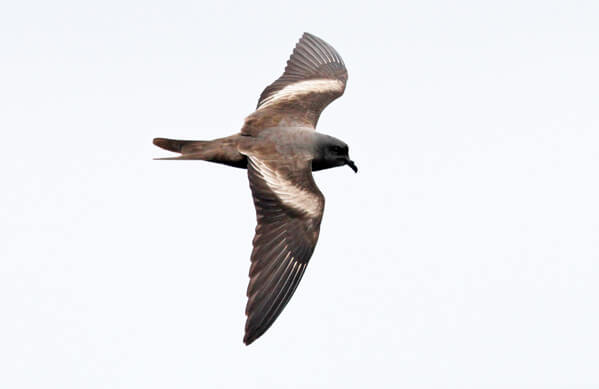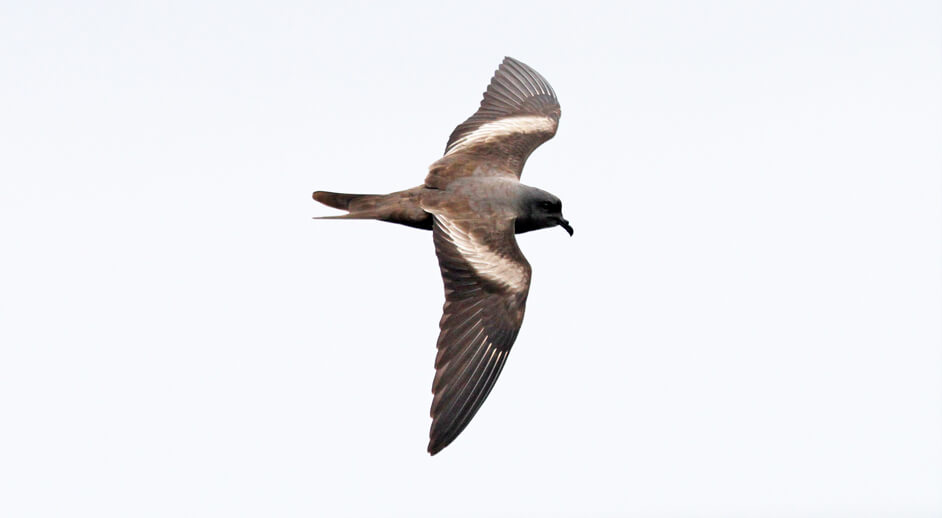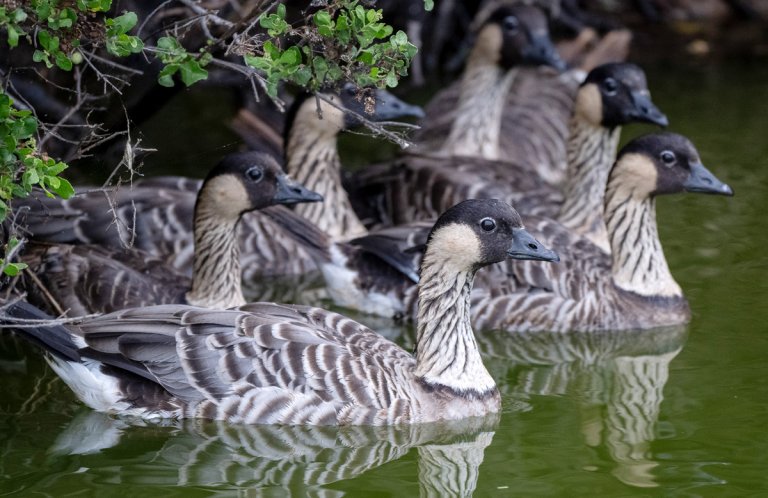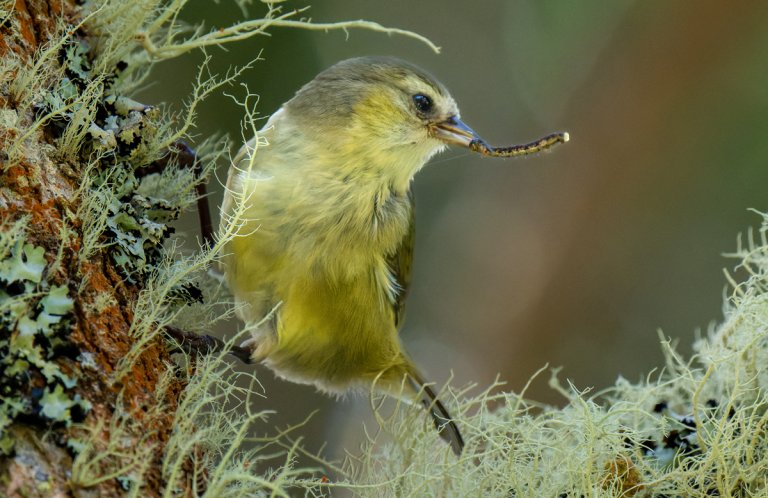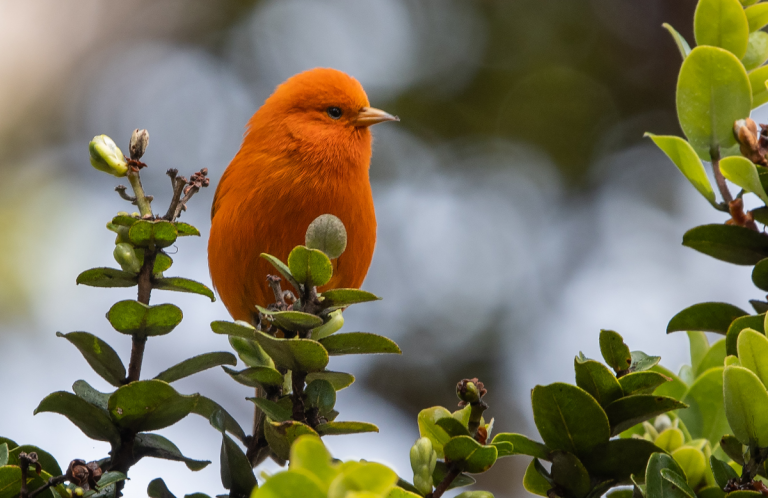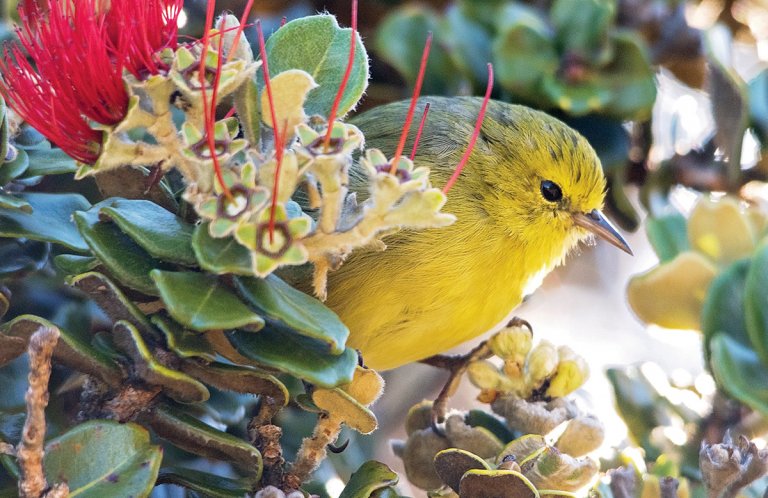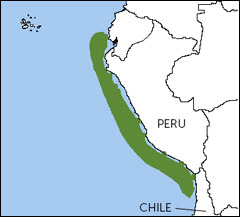 The dark, fork-tailed Markham's Storm-Petrel can only be sighted over the cool waters of the Humboldt Current off South America's Pacific Coast. Its genus name Hydrobates means “water walker,” which describes the way it patters along the sea surface when foraging. It's named for Captain Albert Hastings Markham, who collected the first specimen off Peru.
The dark, fork-tailed Markham's Storm-Petrel can only be sighted over the cool waters of the Humboldt Current off South America's Pacific Coast. Its genus name Hydrobates means “water walker,” which describes the way it patters along the sea surface when foraging. It's named for Captain Albert Hastings Markham, who collected the first specimen off Peru.
Threats to this seabird include mining and the construction of roads, which destroy nesting habitat. Another problem is light pollution, which disorients newly fledged birds and leads to fatal collisions with buildings and other man-made structures. The population is believed to be in decline, in good part due to high chick mortality caused by this light attraction.
The IUCN considers Markham's Storm-Petrel to be a data-deficient species because of the dearth of knowledge about its nesting sites and breeding population estimates. Although there is currently no overall population estimate, 60,000 nests have been estimated in known colonies in Peru and Chile. At sea population estimates, which traditionally have high variability, are much higher.
Biologists at ABC partner organization ROC – Red de Observadores de Aves y Vida Silvestre de Chile – successfully petitioned to have the species listed as Endangered in Chile due to the large number of threats faced by these birds, including an estimated 20,000 birds killed every year due to light attraction and collisions.
Feeding on the Fly
Like others of its kind, including the Hawaiian Petrel and Black-capped Petrel, Markham's Storm-Petrel spends most of its life at sea. This species feeds both close to shore and offshore, with anchovies, squid, shrimp, and krill among its favored prey. However, the bird's diet varies from year to year, especially during El Niño and La Niña events, when changes in water temperature alter food availability.
Sign up for ABC's eNews to learn how you can help protect birds
The storm-petrels feed by swooping down to the ocean surface, pattering their feet on the water with wings raised in a V as they grab their prey. Markham's Storm-Petrel also feeds during brief landings on the water. Interestingly, juvenile birds tend to forage further offshore, while adults are found in greater numbers closer to land.
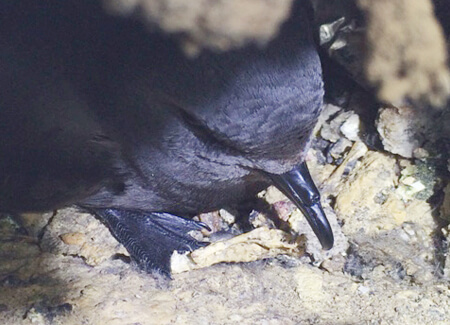
Markham's Storm-Petrel in burrow, Fernando Diaz
One Salty Seabird
Until 2013, scientists knew of only one breeding colony of Markham's Storm-Petrel, on Peru's Paracas Peninsula. In the years since, Chilean birders and researchers have discovered other nesting colonies in the arid Atacama Desert of Chile.
Markham's Storm-Petrels nest underground in natural crevices that sometimes are further excavated by the birds. Extensive deposits of salt – sodium chloride, which exists naturally across large parts of the Atacama Desert – make ideal nesting areas for them, with millions of natural crevices. The Atacama Desert, one of the driest places in the world, is an inhospitable place for mammals and other potential predators, and thus the storm-petrels are safe in their inland “islands” of salt deposits.
This species is socially monogamous, meaning it stays with one partner for the duration of the nesting season. The female lays a single egg deep in the burrow, and both parents tend the egg and the nestling in shifts.
Continuing Conservation
ABC is supporting Chilean ornithologists as they monitor and evaluate threats to the Markham's Storm-Petrel, and work with local entities (mining companies, townships, etc.) to implement conservation actions.
ABC's Seabird Program continues work to protect all seabirds. We support legislation to implement the Agreement on the Conservation of Albatrosses and Petrels in the United States and have launched an interactive web-based tool to help fisheries avoid accidentally catching seabirds: fisheryandseabird.info.
Donate to support ABC's conservation mission!





































